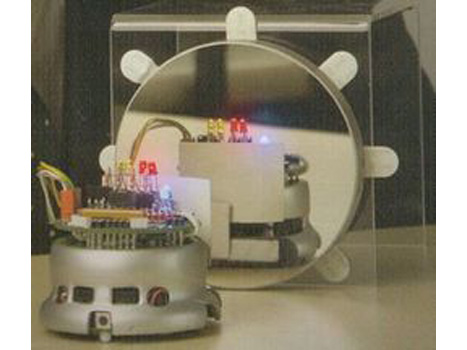Self-aware robot may help restore lost limbs

The science of prosthetic limbs could be about to take a leap forward thanks to a self-aware robot that promises a future where sensation can be restored in missing arms and legs.
Researchers at Tokyo's Meiji University have perfected an artificially conscious robot that can recognise itself in a mirror almost 100 per cent of the time.
's creation has been two years in development - a remarkably short time considering that only humans, some other primates and dolphins are self-aware to that extent.
Me or not me?
The tiny robot is capable of looking at and analysing behaviour in similar machines and telling the difference between what it sees in that case and when it looks at itself in a mirror. Its feelings about each scenario are expressed through combinations of coloured lights.
So, what does this have to do with artificial limbs? According to the team, a key part of the robot's consciousness in accepting that what it sees in a reflection is actually itself could be applied to human brains.
Studies have shown that when people with a missing arm or leg are positioned in front of an arrangement of mirrors in such a way as to reflect the existing limb into the space of the missing one, their brains are tricked into believing they have two once more. Phantom sensations then 'received' from the absent limb confirm this.
Sign up for breaking news, reviews, opinion, top tech deals, and more.
If the robotics technology can be used in the same way, realistic prosthetics may not only look like arms or legs but could even be able to feel and respond just like the real things.
J Mark Lytle was an International Editor for TechRadar, based out of Tokyo, who now works as a Script Editor, Consultant at NHK, the Japan Broadcasting Corporation. Writer, multi-platform journalist, all-round editorial and PR consultant with many years' experience as a professional writer, their bylines include CNN, Snap Media and IDG.